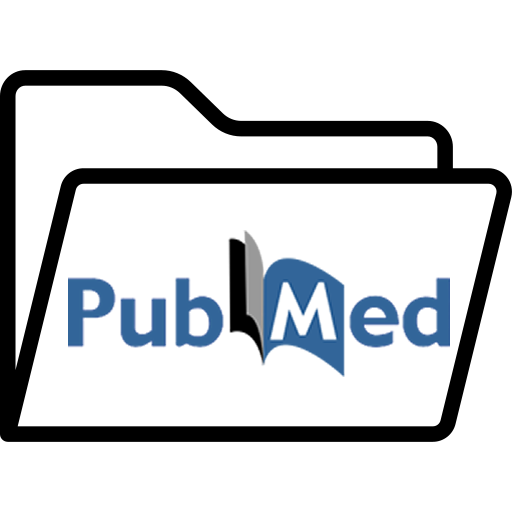Bursa Teknik Üniversitesi Kurumsal Akademik Arşivi
DSpace@BTÜ, Bursa Teknik Üniversitesi tarafından doğrudan ve dolaylı olarak yayınlanan; kitap, makale, tez, bildiri, rapor, araştırma verisi gibi tüm akademik kaynakları uluslararası standartlarda dijital ortamda depolar, Üniversitenin akademik performansını izlemeye aracılık eder, kaynakları uzun süreli saklar ve telif haklarına uygun olarak Açık Erişime sunar.

Güncel Gönderiler
Yapay zekâ destekli maliyet yönetimi: istatistiksel ve makine öğrenmesi modelleri ile bir inceleme
(Bursa Teknik Üniversitesi, Lisansüstü Eğitim Enstitüsü, 2025) İpek, Senanur; Şahin, Hasan
Günümüz iş dünyası, teknolojik gelişmelerin ve küreselleşmenin etkisiyle sürekli bir dönüşüm içerisindedir. Özellikle üretim sektöründe artan rekabet, işletmeleri maliyetlerini düşürmek, kaynaklarını daha verimli kullanmak ve müşteri taleplerine hızla uyum sağlamak için yeni yöntemler benimsemeye zorlanmaktadır. Geleneksel yönetim ve üretim planlama yaklaşımlarının bu karmaşık ve dinamik ortamda tüm ihtiyaçların aynı anda karşılanması hususunda yetersiz kalabileceği düşünülmektedir. Bu bağlamda, yapay zekâ ve veri analitiği gibi modern yöntemler, işletmelerin hem maliyetlerini optimize etmesine hem de operasyonel verimliliklerini artırmasına olanak tanımaktadır. Bu tez, yapay zekâ destekli veri analitiği ve maliyet optimizasyonunun entegrasyonunu incelemektedir. Çalışma, otomotiv sanayisinde kullanılan X ürününün satış ve maliyet tahminleri için çoklu doğrusal regresyon ve makine öğrenmesi modelleri kullanarak, her iki yöntem arasındaki farkları analiz etmiş ve belirli değişkenlerin satış ve maliyet tahminlerinde ne derece etkili olduğunu ortaya koymuştur. Elde edilen bulgular, yapay zekâ ve veri analitiği teknolojilerinin işletmelerin maliyet optimizasyonu süreçlerinde nasıl etkin bir şekilde kullanılabileceğini göstermektedir. Çoklu doğrusal regresyon modelinde yapılan analizler, satış miktarları üzerinde etkili olan bağımsız değişkenleri belirlemiştir. Bu değişkenler arasında Motorlu Kara Taşıt Sayısı (MKTS), Sanayi Üretim Endeksi (SÜE), Tüketici Fiyatlarının Değişimine İlişkin Düşünce (TFDD) ve Ücretlerin Değişimine İlişkin Beklenti (ÜDİB) yer almaktadır. Satış miktarlarına ilişkin modelin Düzenlenmiş R² değeri 0,916 olup, bu da modelin satış miktarlarını yüksek bir doğrulukla açıklayabildiğini göstermektedir. Öte yandan, maliyet tahminlerine yönelik modelin Düzenlenmiş R² değeri 0,974 olarak hesaplanmış ve bu da modelin maliyet tahmininde oldukça güçlü bir açıklayıcılığa sahip olduğunu ortaya koymuştur. Elde edilen sonuçlar, satış ve maliyet tahminlerinde belirli değişkenlerin kritik bir rol oynadığını ve işletmelerin bu değişkenlere dikkat etmelerinin önemli olduğunu vurgulamaktadır. Gradyan Arttırmalı Regresyon Ağaçları (GBRT) ve yapay sinir ağları (YSA) modelleri ile yapılan analizlerde, her iki bağımlı değişken için en iyi performans YSA modellerinden elde edilmiştir. YSA modelleri, doğrusal olmayan ilişkileri daha başarılı bir şekilde modelleyerek daha doğru tahminler sunmuş ve geleneksel istatistiksel yöntemlere kıyasla daha düşük hata oranları ve daha yüksek doğruluk oranlarına ulaşmıştır. Özellikle, X ürünü satış adetleri için yapılan analizde R² değeri 0,98 ve Ortalama Mutlak Yüzde Hata (MAPE) değeri 0,08 olarak hesaplanırken, maliyetler için R² değeri 0,997 ve MAPE değeri 0,02 olarak belirlenmiştir. Çoklu doğrusal regresyon modeli sonucunda raporlanan değerler ise, X ürünü satış adetleri için yapılan analizde düzenlenmiş R2 değeri 0,916 ve X ürünü maliyetleri için yapılan analizde de düzenlenmiş R2 değeri 0,974'tür. Bu bulgular karşılaştırıldığında, makine öğrenmesi modellerinin geleneksel istatistiksel yöntemlere göre daha güçlü tahminler sunduğunu ve işletmelerin karar alma süreçlerine daha fazla katkı sağladığını göstermektedir. Sonuçlar, MKTS ve SÜE gibi değişkenlerin satış ve maliyet tahminleri üzerinde önemli etkiler oluşturduğunu ortaya koymuştur. Bu bağlamda, işletmelerin üretim ve maliyet planlamalarında bu değişkenleri düzenli olarak takip etmeleri, daha doğru ve verimli stratejiler geliştirmelerine yardımcı olacaktır. Sonuç olarak, bu tez hem geleneksel istatistiksel yöntemlerin hem de modern makine öğrenmesi yaklaşımlarının maliyet optimizasyonu süreçlerinde nasıl etkin bir şekilde kullanılabileceğini göstermiştir. Yapay zekâ ve makine öğrenmesi tabanlı modellerin, üretim ve maliyet planlamalarında daha güvenilir tahminler sağladığı ve işletmelerin stratejik karar alma süreçlerine katkı sağladığı ortaya çıkmıştır. Elde edilen bulgular, işletmelerin daha doğru tahminler yapabilmesine ve verimli planlamalar gerçekleştirerek rekabet avantajı elde etmelerine yardımcı olacaktır.
Tekstil sektöründe kasar ve merserizasyon prosesleri için alternatif kimyasalların incelenmesi
(Bursa Teknik Üniversitesi, Lisansüstü Eğitim Enstitüsü, 2025) Musaoğlu, Nur; Ünlü, Derya
Tekstiller insanların hayatında çeşitli yerlerde kullanılır ve bu tekstiller kullanışlı bir hale gelmesi için farklı işlemlerden geçmektedir. Tekstil işletmelerinde özellikle de boyahane proseslerinde uygulanan birçok sulu işlem vardır. Tekstil yaş işlemlerinde ön terbiye bölümünde kostik farklı işlemlerde kullanılır ve kasar ve merserizasyon proseslerinin temel kimyasalıdır. Kostik kullanımından gelen kirliliğin önüne geçmek için kostik yerine daha az zararlı ve düşük maliyetli alternatif kimyasallar bulmak için farklı çalışmalar yapılmaktadır. Bu tez çalışması, tekstil sektöründe çevresel etkileri azaltmak amacıyla alternatif kimyasalların kasar ve merserizasyon süreçlerinde kullanımını incelemektedir. Geleneksel yöntemlerde kullanılan kostik, su tüketimi ve atık su kirliliği gibi sorunlara yol açmaktadır. Bu nedenle, çalışmada kostik yerine geçebilecek, daha az çevreye zarar veren alternatif kimyasallar araştırılmıştır. Çalışma, %100 pamuk ve pamuk-poliester karışımı kumaşlar üzerinde gerçekleştirilmiştir. Deneyler, Box-Benkhen yöntemi ile tasarlanmış, ardından her kimyasal için optiumum koşullar belirlenmiştir. Kullanılan kimyasallar arasında kostik, jelatin, asetik asit, oksalik asit ve etanol bulunmaktadır. Her kimyasal için farklı sıcaklık, konsantrasyon ve süre koşulları belirlenmiş; ardından ağırlık kaybı, temas açısı ve ıslanabilirlik testleri yapılmıştır. Elde edilen sonuçlar, her kimyasal için optimum koşulların belirlenmesine olanak tanımıştır. Biyo-kasar yöntemi, geleneksel kasarlama süreçlerine alternatif olarak değerlendirilmiştir. Bu yöntem, çevre dostu bir yaklaşım sunmakta ve geleneksel yöntemlere göre daha az enerji ve su tüketimi sağlamaktadır. Biyo-kasar yapılmış kumaşların beyazlık, parlaklık ve kopma mukavemeti, kimyasal olarak yıkanmış kumaşlara göre daha yüksek bulunmuştur. Bu sonuçlar, biyo-kasar yönteminin tekstil endüstrisinde uygulanabilirliğini göstermektedir. Tezde ayrıca, farklı kimyasalların kumaş üzerindeki etkileri detaylı bir şekilde incelenmiştir. Örneğin, kostik kullanımı, merserizasyon işlemi sırasında yüksek renk gücü değerleri elde edilmesini sağlarken, jelatin ve diğer alternatif kimyasalların da benzer başarılar gösterdiği gözlemlenmiştir. Oksalik asit ve jelatin, kumaşın doğrusal yoğunluğunu artırarak yüzey özelliklerini iyileştirmiştir. Sonuç olarak, bu çalışma, tekstil endüstrisinde çevre dostu alternatiflerin kullanımının önemini vurgulamakta ve kostik yerine geçebilecek kimyasalların potansiyelini ortaya koymaktadır. Elde edilen bulgular, tekstil üretiminde sürdürülebilir uygulamaların benimsenmesine katkı sağlayacak ve çevresel etkilerin azaltılmasına yönelik önemli bir adım olacaktır. Bu bağlamda, çalışmanın sonuçları, hem akademik hem de endüstriyel alanda dikkate alınması gereken değerli bilgiler sunmaktadır.
Yapay zekâya yönelik genel tutumun liderlik süreci üzerindeki etkisinin incelenmesi: Bursa ilinde bir uygulama
(Bursa Teknik Üniversitesi, Lisansüstü Eğitim Enstitüsü, 2025) Doğan, Ünal; Birincioğlu, Nihan
Teknolojinin gelişmesi ile insanların hayatında önemli gelişmeler ve değişimler olmuştur. Bu değişimin en önemlilerinden biri yapay zekâdır. Yapay zekâ işleri kolaylaştırma, belirli görevleri daha hızlı gerçekleştirme amacıyla insanlar tarafından oluşturulan ve bilgisayar tarafından kontrol edilebilen yeni nesil bir teknolojidir. Yapay zekânın kullanım alanı günümüzde hayatın her alanında özellikle iş dünyasında hızla yayılmaktadır. Bunun yanı sıra, işletmelerin amaçlarına ulaşabilmelerinde liderlik süreçlerinin oldukça önemli olduğu düşünülmektedir. Günümüzde liderlik, sadece insan faktörünü değil, teknolojiyi de etkin bir şekilde kullanmayı gerektiren dinamik süreçtir. Bu bağlamda çalışmamız iş dünyasında yapay zekâ'nın yerini öğrenmek ve çalışma hayatındaki liderlere yapay zekâ'nın katkılarının ne olduğunu belirlemek için Bursa ilinde çalışan insanların yapay zekâ kullanımının iş yaşamlarındaki liderlik süreçleri üzerine etkilerini belirlemek amacıyla tasarlanmıştır. Çalışmanın amacı doğrultusunda nicel araştırma yöntemlerinden ölçek uygulaması kullanılmıştır. Bu kapsamda araştırmacı tarafından belirlenen kişisel bilgi formu, Kaya ve diğ. (2022) tarafından Türkçe'ye uyarlanan Yapay zekâya yönelik genel tutum ölçeği ve Dursun ve diğ. (2019) tarafından geliştirilen Çok yönlü liderlik yönelimleri ölçeği kullanılmıştır. Çalışma kolayda örnekleme yöntemi kullanılarak Bursa ilinde tam zamanlı çalışan 413 katılımcı üzerinde gerçekleştirilmiştir. Araştırma verileri çevrimiçi anket aracılığıyla toplanmıştır. Toplanan veriler SPSS paket programı aracılığıyla analiz edilmiştir. Araştırmada elde edilen bulgulara göre, yapay zekâya yönelik genel tutum ve çok yönlü liderlik yönelimleri (ÇYLY) cinsiyet ve eğitim değişkenlerine göre anlamlı bir fark olmadığı, ancak yaş değişkenine göre yapay zekâya yönelik genel tutum ve pozitif tutum alt boyutlarında istatiksel olarak anlamlı farklılık olduğu belirlenmiştir. Ayrıca, araştırmaya katılan katılımcıların yaş değişkenine göre yapısal liderlik, politik liderlik, karizmatik liderlik ve insan kaynaklı liderlik alt boyutlarında istatiksel olarak anlamlı farklılık olduğu belirlenmiştir. İş deneyimi ve medeni durum değişkenlerine göre ise katılımcıların yapay zekâya yönelik genel tutumları arasında anlamlı bir fark görülmemekle birlikte, ÇYLY arasında anlamlı fark görülmektedir. Son olarak, yapay zekâya yönelik negatif tutumun ÇYLY alt boyutları ile arasında anlamlı ve pozitif yönlü ilişki olduğu tespit edilirken, pozitif tutum ile yapısal liderlik alt boyutu arasında anlamlı bir ilişkiye rastlanılmamış, politik ve karizmatik liderlik alt boyutları ile anlamlı ve negatif yönlü, insan kaynaklı liderlik modeli ile ise anlamlı ve pozitif bir ilişki tespit edilmiştir. Sonuç olarak; çalışmanın bulgularına dayanarak, cinsiyet ve eğitim durum değişkeninin yapay zekâya yönelik genel tutumlar ve liderlik yönelimleri arasındaki ilişkide sınırlı bir etkisi olduğu görülmektedir. Ancak, yaş, medeni durum ve iş deneyimi gibi demografik faktörlerin bu ilişkilerde belirgin farklılıklar yarattığı gözlemlenmiştir.
Güzelin kaybı olarak mahremiyet krizi: Modern göz'ün eleştirisi
(Bursa Teknik Üniversitesi, Lisansüstü Eğitim Enstitüsü, 2025) Yiğit, Kübra; Ulukütük, Mehmet
Modern Çağ'ın asli sorunu olarak karşımıza çıkan güzelin ifşaatı; güzelin sıradanlaşması/bayağılaşması/banalleşmesi mahremiyet krizine yol açmıştır. Güzelin kaybı olarak mahremiyet krizinin Modern Çağ'daki tezahürlerini incelemek, modernitenin bu durumda izlediği politikaları, çalışmaları ve ikame biçimlerini dikkate alarak günümüz toplumlarının son tahlilde geldiği durumu mukayese etmek çalışmanın temel amacıdır. Modernizm, logosentrik bir yapıdan, okülersentrik bir yapıya dönüşümün adıdır. Okülersentrik yapı içerisinde şekillenen kültür, toplum ve devlet asli olarak 'görünen şey' üzerinden tasnif edilmeye çalışılmıştır. Bu esnada ortaya çıkan güzelin görünmezliği (ifşa edilmesi) ve devamında mahremiyet krizinin doğması, insanı vitrinde yaşamaya sevk etmiştir. Modern Çağ'da güzelin kaybından söz edebilmek için öncelikle güzelin kült değerinin sergi değerine nasıl dönüştüğünden söz etmek gerekir. Modern göz; gören, görünen ve görülen ekseninde şekillenmiş olup mahremiyetin mahrumiyete dönüşmesine sebep olmuştur. Sağlıklı olanın güzelin pürüzsüzlüğü olması, mahrem olanın ise mahiyetini yitirmesi 'Modern Göz'ü iktidara getirmiş ve egemen kılmıştır. İnsanlar, yaşadıkları hayatın ancak seyredildiği ölçüde değer kazandığını düşünmektedirler. Mahrumiyet Güzelin modern dönemde sergi değerinin de artmasıyla temsil kaynakları da artmış ve Homo Sapiens sekülerleşerek modern dönemde yeni formlar kazanmıştır. Her dönem yeni kaynaklar ortaya çıkmış ve buna eşlik eden akımlar/ideolojiler ile toplumu şekillendirmek Modern Göz'ün ideali haline gelmiştir. Bu noktada Modernite içerisinde Mahremiyet arka planda kalmış ve ideolojik yapı haddini aşarak kendini gerçekleştirmiştir. Güzelin kaybı ve mahremiyet krizi Modern Çağ temsil tasarısı olarak toplum tipleri şeklinde senaryolaşmıştır. Temsil toplum (tüketim toplumu, şeffaflık toplumu, gösteri toplumu, teşhir toplumu vb.) tiplerinin nasıl değerlendirileceği, nelere yol açabileceği ve hangi ideolojik yapılar tarafından viral hale gelip meşrulaştırıldığı tartışılacaktır. Bu bağlamda çalışmada, güzelin kaybının yol açtığı mahremiyet krizine yer verilecek, konunun günümüzdeki yansımalarına ve dönüşümlerine değinilerek Modern Çağ'ın güzelin ifşası olarak mahremiyet durumu tartışılacak ve güzelin dolayısıyla mahremiyetin en korunaklı olduğu Orta Çağ dikkate alınarak güzelin kaybı olarak mahremiyet krizi Modern Çağ eleştirisiyle ifade edilecektir. Günümüz toplumlarının güzelin kaybı olarak mahremiyet krizi karşısındaki tutumu ve uyumu açısından hangi nokta da olduğu açıklanacak ve tartışılacaktır.
Türkiye iklim endeksi değerleri ile ahşabın biyolojik bozunma derecesinin değerlendirilmesi
(Bursa Teknik Üniversitesi, Lisansüstü Eğitim Enstitüsü, 2025) Arı, Seren Seda; Dizman Tokmak, Eylem; Taşdemir, Çağatay
Ahşap malzeme organik bir madde olması nedeniyle çeşitli biyolojik zararlılar tarafından degrade edilebilmektedir. Sıcaklığın özellikle 20-27°C arasında ve nemin %65-70 olması halinde mantarlar için uygun bir yaşam ortamı sağlanmış olur. Ülkemizde genellikle dış ortam koşullarında kullanılan ahşap malzemeler bu değerler aralığında bulunduğundan mantar zararına maruz kalmaktadır. Bu nedenle iklim indeksi değerlerinin bilinmesi ülkemizde dış ortamda kullanılan ahşap malzemenin mantar zararına uğrama derecesinin değerlendirilmesi ve potansiyel bozunma tehlikelerinin olumsuz yansımalarını en aza indirgemek adına alınması gereken teknik ve pratik önlemler hakkında bilgi vermesi bakımından önemlidir. Çalışmada, ülkemiz illerinin 2012-2023 yılları arasındaki meteorolojik verileri alınarak iklim sınıflandırılmasını yapmak ve iklim indeksi değerlerini hesaplayarak ahşabın biyolojik bozunmasını ilişkilendirmek amaçlanmıştır. Bu amaçla son 11 yıllık süreçte meteorolojik parametrelerden sıcaklık ve yağış faktörleri ele alınarak Erinç iklim sınıflandırması ve Scheffer İklim İndeksi değerleri bulunmuş ve iklim indeksi değerlerinin çürüklük riskine göre sınıflandırması yapılmıştır. Ayrıca optimize edilmiş SARIMA modelleri kullanılarak önümüzdeki 5 yıl içinde iklim sınıflandırma ve endeks değerlerine yönelik tahminlemelerde bulunulmuştur. Küresel Güneş Radyasyonu Toplamı (kwsaat/m2), sıcaklığın 30℃ üzeri olduğu gün sayısı ve toplam güneşlenme sayısı verileri de incelenerek elde edilen sonuçlar yorumlanmıştır. Sonuç olarak, 2012-2023 ve 2024-2028 yılları arasındaki iklim indeksinin, daha önceki yılların iklim indeksi değerlerine kıyasla azaldığı bulunmuştur. En yüksek yağış etkinlik indeksi Doğu Karadeniz bölgesinde elde edilirken, en düşük Güneydoğu Anadolu ve İç Anadolu bölgesinde elde edilmiştir. İller bazında ise en yüksek yağış etkinlik indeksi Rize'de, en düşük Iğdır'da tespit edilmiştir. Scheffer İklim İndeksi değerlerinin ise son yıllarda ve önümüzdeki yıllarda hafifçe arttığı bulunmuştur. En yüksek Scheffer İklim İndeksi Doğu Karadeniz bölgesinde sırasıyla Rize, Giresun, Ordu ve Trabzon için bulunurken, en düşük indeks Doğu Anadolu bölgesi illerinden Bitlis ve Van, İç Anadolu bölgesi illerinden Karaman ve Güneydoğu Anadolu bölgesi illerinden Batman'da tespit edilmiştir. İklim indekslerinde bulunan bulguların azalan yağış ve artan sıcaklıklarla ilgili olduğu düşünülmektedir. Küresel Güneş Radyasyonu Toplamı (kwsaat/m2), sıcaklığın 30℃ üzeri olduğu gün sayısı ve toplam güneşlenme sayısı değerlendirildiğinde ülkemizde son 10 yıl içerisinde sıcaklığın bölgelere göre arttığı görülmektedir. Bu bilgiler, Erinç iklim indeksi ve Scheffer İklim Sınıflandırması ile uyumlu bulunmuştur. Çürüklük riskinin fazla olduğu bölgelerde dış ortam koşullarında kullanılacak ahşap malzemenin emprenye işleminden geçirilerek kullanılması bir zorunluluktur. Tüm dünyada olduğu gibi ülkemizde de artan küresel ısınma, iklim üzerinde önemli değişimlere neden olmaktadır. Bunun sonucu olarak dış ortam koşullarında kullanılan ahşap, mevsimsel etkilerden önemli ölçüde etkilenmekte ve kullanım ömrü zamanla değişebilmektedir. Özellikle son yıllarda yağış miktarındaki azalma buna karşılık sıcaklık ve global güneş radyasyonu miktarındaki artışa bağlı olarak ahşaba zarar veren bozundurucu faktörlerde değişiklikler olması muhtemeldir. Özellikle mantar saldırılarının yanı sıra böcek ve termit saldırılarının önümüzdeki yıllarda daha fazla görüleceği düşünüldüğünden dış ortam ahşap ürünlerin emprenye edilerek kullanılması veya modifiyeli ahşap malzemelerin kullanılması, bu ürünlerin kullanımının yaygınlaştırılması ve buna yönelik toplumsal farkındalığın arttırılması gereklidir.




















